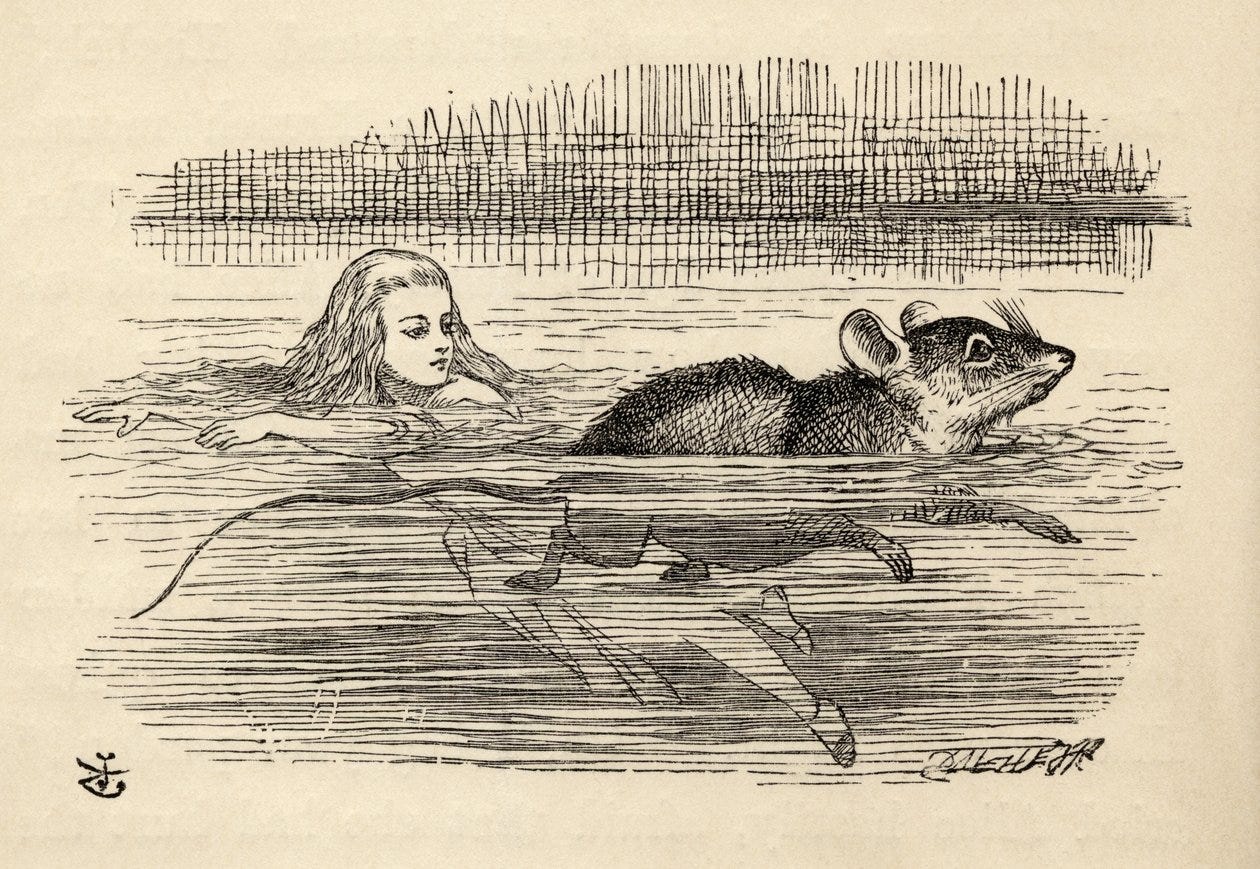Speculative Non-Fiction as a Portal
+ special discount for Substack subscribers
I’ve been enjoying Mira Ptacin’s To Catharsis and Beyond class at Writing Workshops. In her essay “Entering Through the Side Door: A Path for Approaching Your Truth in Difficult Material,” she offers formal advice on how to write about trauma. I love the class and highly recommend it (along with her beautiful memoir Pour Your Soul)! It’s been inspiring me to think of even more ways to “enter through the side door” or if you’re witchy — the side portal!
Speculative creative non-fiction is a portal which might especially appeal to witches. Laraine Herring defines speculative non-fiction in Brevity magazine as “an umbrella genre in which the questions of the memoirist’s book are addressed through speculative elements, which may include ghosts, metaphors, what-ifs, imaginative scenarios, and fantasies. It is memoir focused more on the possibilities of the internal world than the facts of the external world.”
Below is my first video share ever! Although I employ “flights of fancy,” animal communication is real to witches.
Carmen Maria Machado’s In the Dream House is one of my favorite works of speculative non-fiction. The inventiveness of the genre may invite queer and other marginalized folx to write the stories that have not been written yet, the stories for which there are no maps. Machado bends the genre further with her formal experiments. Each chapter is almost like a discrete lyric essay in which an abusive relationship is refracted, and often crosses into other genres such as science fiction or horror.
I want to hone in on the technique of “flights of fancy” in Dream House as Apartment in Chicago. A flight of fancy is an imagined being or event presented to the reader as “real.” In this passage, Machado borrows from Alice in Wonderland when she cries herself a river to swim in and sees a mouse. She anchors this flight of fancy within a “real” yet defamiliarized setting — the Thorne Miniature Rooms at the Chicago Institute of Art.
Although all of these flights of fancy are imaginatively compelling, they also “show” the distortion within the psyche of an abused person. Machado “shows” through the body: “soon you find yourself paddling in your own tears, again.” Notice, too, how the miniature rooms connect to the larger theme of “the dream house,” which has also been described as a metaphor for the body.
Within the context of the abusive relationship with her girlfriend described throughout the book, we know that the cat represents her. The mouse has the right instinct to protect itself and swim away from any talk of the cat. But the speaker is mired in the cognitive dissonance of loving the seemingly “good” parts of her girlfriend: “she’s such a dear thing.” The good times keep the abused person stuck in a cycle of hope and despair when the dream inevitably turns into a nightmare. Even though the speaker is the size of a mouse, and has suffered abuse from the girlfriend before, she tries to convince the mouse of the cat’s goodness.
This is the “side door” at its best. The flight of fancy reinvigorates subject matter that could invite self-pity, which makes it more compelling to the reader. The delight in the lyricism and embodied world may have allowed the writer to tackle this difficult subject in a way that writing a “realistic” account might not have.
Dream House as Apartment in Chicago
Excerpt from In the Dream House by Carmen Maria Machado
You and your friends decide to get out of town, and you arrange a trip to Chicago. You left a broken phone behind, but this does not stop you from touching your pocket reflexively, wondering if she’s been trying to call you.
Even through your grief, you appreciate the trip: you sleep on the couch of the sublet you rented together and only wake up because your friend Tony gently crab-claws your foot poking out from beneath a blanket. When you look around the room, all of your friends sleeping so close to each other, like kittens, and you want to curl into a pile with all of them.
Still, you cry at meals, you cry in the streets. When you break off for small-group activities, you go with Ben and Bennett. You love them both, and mostly you love how they will not emote at you or ask you how you’re feeling. You go to the Art Institute of Chicago and spend a lot of time in two places: the Thorne Miniature Rooms and Ivan Albright’s That Which I Should Have Done I Did Not Do (The Door). Both fill you with a queer pleasure; both make you cry. One makes you feel immortal, godlike: as if you are a time-traveling spirit, hunched up in the corners of nineteenth-century English drawing rooms and sixteenth-century French bedrooms and eighteenth-century American dining rooms, watching the lives of the mortals play out in miniature dioramas. The other makes you feel small, as if you are prostrate before death’s flickering veil. Small, and then even smaller, and soon you find yourself paddling in your own tears, again. You hear something splashing about in the pool a little way off, and you swim nearer to make out what it is. At first, you think it must be a walrus or hippopotamus, but then you remember how small you are now, and you soon find that it is only a mouse that has slipped in just like you.
“Would it be of any use, now,” you think, “to speak to this mouse? Perhaps he’s a Cuban mouse, come over during the Ten Years’ War.” (For, with all your knowledge of history, you have no very clear notion how long ago anything has happened.) So, you begin: “¿Dónde está el gato malo?” which is the first complete Spanish sentence you can think of. The Mouse suddenly leaps out of the water, quivering with fright. “Oh, I beg your pardon!” you cry, afraid you have hurt the poor animal’s feelings. “I quite forgot you didn’t like cats, good or bad.”
“Not like cats!” shouts the Mouse. “Would you like cats if you were me?”
“Well, perhaps not,” you say soothingly. “Don’t be angry about it. And yet I wish you could meet my cat; I think you’d take a fancy to it if you could only see her. She is such a dear thing,” you go on, half to yourself, as you swim lazily about in the pool, “and she sits purring so nicely by the fire, licking her paws and washing her face—and she’s such a capital one for catching mi—oh, I beg your pardon!” you cry again, for the Mouse is swimming away from you as hard as it can and is making quite a commotion. You call softly after it, “Mouse, dear! Do come back, and we won’t talk about cats!”
When the Mouse hears this, it turns around and swims slowly back to you: its face is quite pale (with passion, you think), and it says in a low, trembling voice, “Let us get to the shore, and then I’ll tell you my history, and you’ll understand why I am afraid of cats.”
It is high time to go anyway, for the pool is getting crowded with the birds and animals that have fallen into it: there is a Duck and a Dodo (Amy Parker’s “trusting, extinguished bird”), a Lory and an Eaglet. And among them, every stranger who has ever seen you cry in public is doing the breaststroke. You turn from their pity and lead the way; the whole party swims to the shore. At the water’s edge, the creatures and the strangers disperse into the streets of Chicago.
—
When you arrive home, there’s a message in your inbox: “I’ve made a mistake.”
PROMPT:
Write a poem or flash piece in which you use at least one “flight of fancy” or speculative element. If you’d like to add another layer of defamiliarization, you can write in the second person “you.”
WORD LIMIT:
750






Thank you so much for sharing this piece; the waterlogged “thrown throne” really got to me; perhaps it was the sogginess connecting back to Alice’s tearpond…or those bald trolls, which absolutely terrified me. I mostly consume “dark fiction” and horror, so I enjoy being startled. Really chthonic stuff here.
Thank you for sharing on video, really beautiful piece with incredible craft.